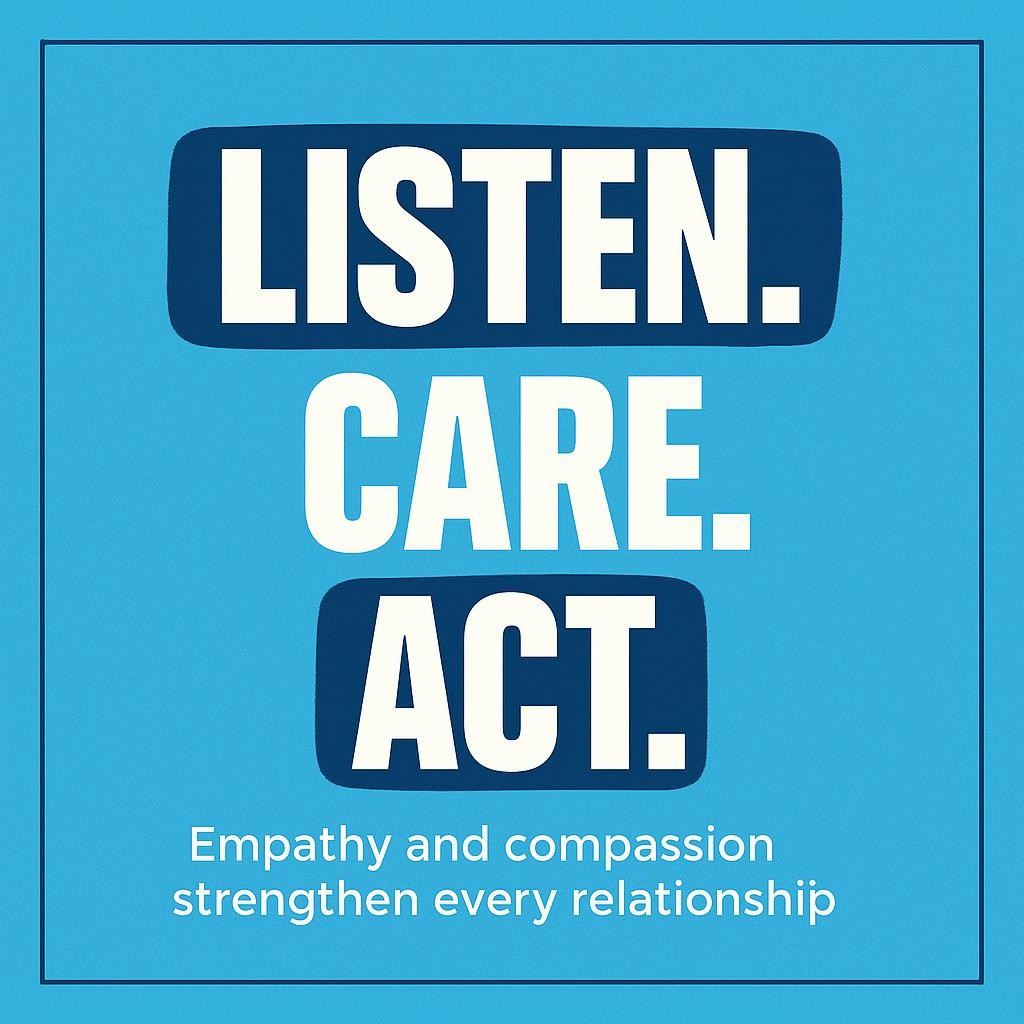Empathy and Compassion: Key Ingredients for Meaningful Relationships
I saw it happen at a kitchen table. A father and son, both stubborn, both tired. The father wanted to fix things fast. The son needed someone to really hear him. Silence stretched. Then the father tried something new. He listened, reflected what he heard, and asked what would help. It wasn’t dramatic. But the room changed. The son’s shoulders dropped. Conversation began again.
That small shift is what Rand Selig is asking of us in Thriving! It’s the turn from being right to being present. From reacting to relating. The book makes one point plain: empathy and compassion are not extras; they are how relationships grow strong and stay strong. Emotions spread and shape our homes, teams, and communities every day .
Why Empathy And Compassion Matter
Selig draws a clear line. Empathy is our ability to understand and feel another person’s emotions. Compassion is when those feelings include the desire to help. As the book reminds us through Mark Twain, “Compassion is a language the deaf can hear and the blind can see.” It then lays out three kinds of empathy—cognitive, emotional, and compassionate .
Most people don’t need our tears or our detached logic. They need us to understand, care, and then help take action. This “compassionate empathy” balances head and heart—and it’s a path to peace inside and with others .
A Quiet Shift That Changes Everything
Selig doesn’t preach from a pedestal. He names his own edges—how his drive and limited emotional empathy caused strain at home—and how years of effort grew more compassion, humility, and gratitude. That work changed his closest relationships and his life. The message under the message: our past doesn’t lock our future. We choose, practice, and grow, one conversation at a time .
What Compassionate Empathy Looks Like In Action
In leadership and everyday life, Selig points to a better way to connect: thank people; listen for their frame of reference; share something personal; explain the why, not just the what. He calls for a move from command-and-control to real connection—“be a sponge, listen, and ask questions”—and to choose dialogue rather than debate. This isn’t soft. It builds trust, credibility, and buy-in because people feel respected and seen .
If you want more on trust and empathy in action, these pieces align with Thriving!:
- Emotional Intelligence: Build Trust for Better Relationships
- Leading by Example: Build Trust and Teams with Empathy
The Family Test
Selig brings it home. He urges us to be modest in our demands and generous in our giving, to keep our criticism gentle, and to never miss a chance to offer words of appreciation or praise. That’s empathy and compassion in daily action—more kindness than counting, more listening than lecturing .
He also points to simple traditions that bond us over time—shared meals, group hugs, weekly check-ins. Doing things together builds mutual understanding, compassion, and trust .
From Pairs To Communities
This same spirit scales. Communities become strong not by chance but by “cutting and polishing.” Selig shares clear guidelines: build a shared vision, honor different styles, keep balance, learn together, and create connection by doing things together. The real glue comes “from the heart”—relationships, compassion, and trust .
As the book reminds us, “Coming together is a beginning; keeping together is progress; working together is success.” That work is empathy and compassion in motion .
The Hidden Gem Most People Miss
Here’s the gem many overlook in Thriving!: empathy without action can still leave someone alone. Emotional empathy can even overwhelm us or the other person. Compassionate empathy—understand and care, then help take the next step—is the steady ground where relationships grow. It’s the balance of logic, feeling, and action that people can stand on when life shakes them .
Simple Steps You Can Use Today
- Listen for their “why.” Ask questions. Reflect what you hear. Seek their frame of reference. It affirms and respects people and creates real connection .
- Choose dialogue over debate. Debate tries to win; dialogue tries to learn. Aim for shared understanding .
- Appreciate differences. Value others’ opinions. Invite contribution. This is how synergy—better together than alone—happens .
- Acknowledge and appreciate. Say what you notice. Say thank you. Treat conflict as a chance for creative solutions .
- Build small rituals. A shared meal, a weekly check-in, a kind word—these weave trust over time .
Courage, Tenderness, And Being Seen
Empathy and compassion take courage. Vulnerability is not weakness here; it opens the door to belonging and authenticity. When we let ourselves be seen—imperfect and real—we make room for love to enter. That kind of strength draws people closer and builds the life we actually want to live .
One Clear Action
Today, try compassionate empathy with one person. Listen for their frame of reference. Reflect back what you hear. Then ask, “What would help right now?” Take one small step together. And hold this question from Rand Selig close: “Could this coming year be the best year of your life thus far? What would it take for this to be so?”
Maybe it starts here, at your own kitchen table. Who needs your presence, not your perfection?
